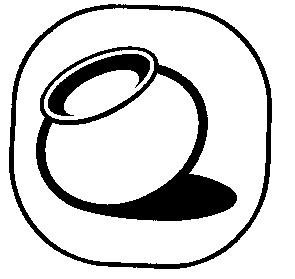MIG:
Can you give a brief overview of the Ecomark scheme and the method
of implementation that was planned?
NGW:
The Government of India (GOI) instituted in 1991 a scheme, voluntary
in nature, to label a basket of consumer products as "environment
friendly." The basic objective of the scheme was to encourage
the consumption of such products through the award of a distinguishing
sign of an "Ecomark." The inherent principle of the Ecomark
was to assign the label to a product, which is made, used or disposed
of in a way that significantly reduces the harm it would otherwise
cause to the environment. Ecolabelled products must also satisfy
the quality, performance and safety requirements laid down for the
specific product by the Bureau of Indian Standards (BIS). The norms
for eco-labelling are established by the Ecomark Technical Committee
of the Central Pollution Control Board (CPCB, Ministry of Environment
and Forests, GOI). BIS is the implementing authority for the Ecomark
as well as the ISI mark, which is a necessary adjunct.
MIG:
What were the problems encountered during implementation?
NGW:
Industry argument has all along been that the criteria for eco-labelling
are not relevant to Indian conditions, nor does the scheme give
any encouragement to improve technology. It stifles innovation and
freezes development of newer alternatives to existing products.
The setting-up of eco-criteria was said to be a rushed exercise,
"negative listing" of ingredients is undesirable and there
was too much emphasis on safety (which is the job of other legislation/agencies).
The criteria, say industry spokespersons, are mostly based on popular
perceptions of environment safety and would legitimise inferior
products. Finally, the crux of the argument was that brand equity
would get less importance in the marketplace. The argument ends
with the line that the Ecomark is inherently incompatible with rapid
changes in the FMCG (fast moving consumer goods) scene.
MIG:
What is the present status of implementation of the scheme?
NGW:
The first Ecomark was awarded some five years ago to a Godrej product,
"Ezee," a liquid detergent for washing special /delicate
fabrics (such as silk and wool). The ownership of the brand passed
to Procter and Gamble, their strategic partner, which had different
business considerations from the parent company and which were prompted
by the formers multinational policy. Now a license has been granted
to Madhya Bharat Paper Ltd., Bilaspur (M.P.) for use of the Ecomark
on two types of writing and printing papers. In fact, in order to
attract applicants for the Ecomark, the M.P. Government sanctioned
an exemption of 50 per cent in the consent/renewal of consent fee
to all industries awarded with the mark. Similar fiscal concessions
and financial incentives were recommended by the CPCB to popularise
the scheme. Interactive meetings with industry bodies like FICCI
and CII were held, but to no avail. Yet, out of the 14 product categories
across which eco-criteria have been formulated for a few hundreds
of consumer goods, after years of effort by representatives of the
industry, research laboratories, technical experts and consumer
organisations, only two within a single category (paper) sought
and got the Ecomark.
MIG:
What is the level of awareness about the scheme among ordinary consumers
in India?
NGW:
Ordinary consumers are hardly aware of the Ecomark or the concept
itself. Even the ISI mark took off only when there was an element
of compulsion as in the case of food colours and food additives,
condensed milk and baby milk powder, where health and safety are
concerned. Or, in the buying policy of government indenting agencies,
where ISI marked products were given preference. Household electrical
appliances, domestic pressure stoves are some items brought under
state orders for mandatory marking but enforcement is lax. BIS response
to failures of ISI marked products bought by consumers is lukewarm.
Hence, the mark does not inspire confidence with consumers who are
cynical about official certification for reasons known to all. Industry
opines that the Indian consumer is more driven by price considerations
and brand loyalty rather than the esoteric concept and personal
conviction to save the environment.
MIG:
What do you feel, should be done to aid implementation of the Ecomark?
NGW:
The government, central and state, quasi-government bodies and other
local institutions, which constitute nearly 80 per cent of buyers
of goods, should set an example by insisting on eco-products giving
a price and priority preference to them. If the government and other
state institutions do not have faith in certified goods, be they
ISI or Ecomarked, then the common consumer too will not choose such
products. The industry puts a scare that eco-labelled products will
cost more and hence, consumers will shift to others (unlabelled),
particularly in price-sensitive ones. The alternative is compulsion,
which in the present scenario of liberalisation, is not acceptable.
MIG:
How much does consumer education and awareness contribute to the
success or failure of such labelling schemes?
NGW:
Consumer education is part of the school syllabus in higher classes.
Children should be taught about the environmental impact of products
and processes just as the effects of leaded fuel and thin plastics
were focused on in the media and in some educational institutions.
The media has a real role to play to spread the message of environmental
safety. GOI has already attempted to enhance awareness of the Ecomark
in India through a private publication, WISTA ECOMARK, which commissioned
six (bimonthly) issues from April 1999 and circulated about 600
copies to Central and State governments, NGOs, consultants, research
institutes, industries and consumer organisations and some overseas.
I do not think that this made a significant impact in diffusing
information or creating public awareness.
N.G.Wagle,
a chemical technologist, is the past chairman of the Consumer Guidance
Society of India (CGSI) and member of its managing committee. He
edits the monthly journal, KEEMAT, of CGSI. He is also Vice-President
of the Association of Consumers Action on Safety and Health (ACASH)
and represents it on the Ecomark Technical Committee.

![]()










